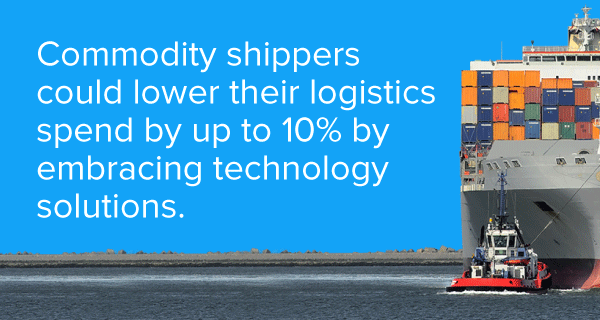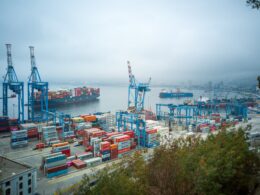Greg Kefer, VP of marketing, Infor
When studying global trade, analysts often look at ocean shipping as one of the barometers of economic health. More than 90% of the world’s trade is carried by sea, according to the International Maritime Organization (IMO). If you have ever had the opportunity to tour a major container terminal, it’s hard to get over the sheer scale of the operation and just how much stuff flows through a single port.
Among the millions of shipping containers that are moved each year, a significant amount of those “boxes” are filled with raw materials such as paper, agriculture, metal, mining, and chemical products. These commodity products are the foundational ingredients that ultimately get made into the products, machines, and other things that make the world go.
Commodity shipments typically include heavy or bulky, high volume, lower value products. Container shipping is a vital component to these supply chains because it is so efficient and capable of moving vast quantities around the globe.
In the Journal of Commerce’s recent assessment of the top 100 US container freight exporters, all of the top 10 companies were commodities shippers, with volumes ranging from 78,000 to over 300,000 containers annually. These are vast and complex supply chains that must support trade between extremely remote locations and with the big urban manufacturing centres.
Commodity shippers have embraced technology
Since the product being shipped is not expensive seasonal apparel or next generation electronics, the cost of logistics takes up a sizeable portion of the product cost. This is why commodity shippers have to be masters of logistics spend control. The complexity of the massive transportation contracts, along with the drive for spend optimization pushed commodity shippers to become the pioneers in freight spend management technology solutions over a decade ago. These companies were the first to realize they could easily lower their logistics spend by 5-10% – a significant advantage in an industry where margins are under constant scrutiny.
Another huge dimension of the commodity supply chain is the connection to customer service and added value. If a manufacturing customer can’t count on receiving the raw materials it needs to produce its product, it can easily seek other options. The ability for a commodity shipper to reliably communicate delivery’s location and its expected time of arrival is crucial to the commercial relationship. This is where supply chain visibility comes into play. When a customer service rep at a commodity shipper is able to look up a container shipment and provide accurate status and ETA information, it has a tangible effect on customer satisfaction and overall brand reputation. Not to mention, visibility is the foundation to assuring supply is there when and where it’s needed.
Supply chains as a brand differentiator
Orchestrating such a vast supply chain is incredibly hard without technology. If a company is to be able to grow and prosper, product plus supply chain capability will separate the winners from the losers. That differentiation is why Marion Matthewman, head of global logistics at Syngenta, sought to transform her supply chain through enhanced visibility and connectivity between the agribusiness giant, its logistics partners, and its more than 400 million farmers scattered around the world:
“Our industry needs to be agile because farming is weather dependent, and so when the farmer wants his seeds to plant we need to have them there because there’s often very short windows and therefore we need to make sure that we can respond.”
– Marion Matthewman, head of global logistics at Syngenta
In the commodities industry, failure to orchestrate on a massive global scale is a strategic differentiator. While the product being shipped may not be as sexy as the latest holiday gadget or spring fashion, the companies that ship the heavy volumes around the world have invested heavily in network-based technology solutions to keep the tonnage moving from all points around the globe. This is why we frequently see leaders such as Dow and Syngenta being profiled as supply chain innovation leaders at conferences and in the media. Failure in achieving supply chain excellence is simply not an option any more.













